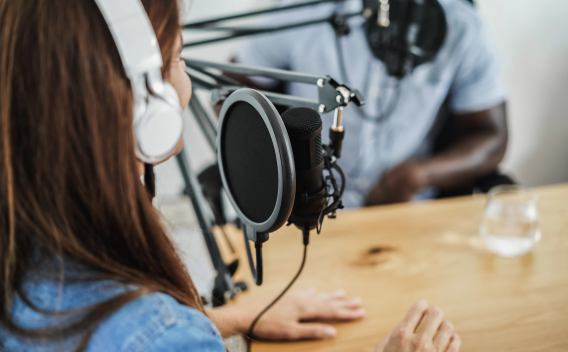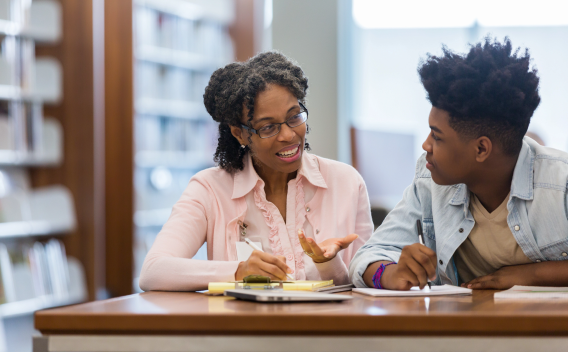By
Published
February 22, 2021
Tags
The impact of COVID-19 has made this school year challenging and painful for students, families and teachers alike. But, since the pandemic began, many educators and school leaders across the country have demonstrated a commitment to meeting student needs through innovative approaches to traditional learning practices. In doing so, schools are striving to prioritize student success and lay the groundwork for a more equitable and inclusive education experience that will impact students for years to come.
The expertise behind these efforts cannot be underestimated; to continue driving student success, we must lean into the wisdom of the trusted professionals who are developing and implementing these new approaches to education in real-time.
A great place to start: Mindshift, KQED’s designated reporting on the latest conversations and trends in education. In a recent Mindshift series on best practices for navigating new approaches to education during COVID-19, reporters Kara Newhouse, Paul Davarsi and Suzanne Bouffard share stories from schools across the country on how they are managing the greatest challenges imposed by the pandemic. This series, sponsored by Schusterman Family Philanthropies, not only brings insights from educators and school leaders to the forefront, but serves as much-needed inspiration for any school navigating today’s ever-shifting education landscape.
Of course, with the wealth of best practices available, choosing which lessons to bring back to your own school may be the hardest step. To help, here are four stand-out approaches surfaced in this series to support you in facilitating an education that is responsive, affirming and as effective as possible during this time.
1. Prioritize opportunities for student-teacher bonding

(Photo: Drazen Zigic/Shutterstock)
Research shows that strong student-teacher relationships are a vital ingredient to academic success, especially for students of color. With students’ daily lives impacted by the disruption of COVID-19—and students of color disproportionately so—embracing opportunities to provide our learners with stability through familiar relationships can help keep them on the road to success.
To foster these student-teacher bonds, students at Hillsdale High School in San Mateo, California, are placed with the same teachers for their core subject areas through their first two years. Principal Jeff Gilbert shares that this practice of “teacher looping” allows teachers and students to dive deeper into both academic and socio-emotional learning during this pandemic. Read more about the benefits of teacher looping.
A Tip We Love: Encourage community-building activities, such as meaningful advisory periods, that allow students to build and sustain bonds with their educators.
2. Explore teaching methods focused on learner variability

(Photo: RyanJLane/iStock)
To navigate these challenges, some educators are turning to the Universal Design for Learning (UDL) framework, an approach devised to meet each individual student’s learning skills and needs. This framework provides a series of 31 guidelines on shaping accessible working environments, and, in some cases, these guidelines are best implemented in virtual classrooms due to the various digital tools that online learning environments offer. Read more about how the Universal Design for Learning (UDL) framework can help facilitate accessible online classrooms.
A Tip We Love: Offer a variety of ways that students can submit assignments— rather than just written responses—such as through voice-to-text dictations, infographics, short videos and podcasts.
3. Solicit student input on rules and procedures

(Photo: Allison Shelley/American Education)
Even before the pandemic, students did not experience discipline equally in our education system. According to a Child Trends 2019 report, Black students in the 2015-2016 school year were suspended more than twice as often as white students, and students with disabilities were suspended more than twice as often as students without disabilities. No matter when a school reopens, the new rules and procedures put in place—such as wearing masks and keeping desks at a distance—may lead to increased opportunities for disciplinary action, reinforcing existing disparities.
At the Dr. Martin Luther King Jr. Academic Middle School (MLK) in San Francisco, the school has gone from having one of the highest suspension rates in the country to a steep drop in disciplinary actions. Michael Eissen, the school’s principal, is not worried about managing discipline during the pandemic. The key? Listening to students and shaping rules and procedures with their input. Read more for equitable and effective ways to manage discipline as schools reopen.
A Tip We Love: Foster a sense of student ownership over rules and procedures by inviting students to collaborate on a chart listing out the procedures they want to experience more and less of in their school.
4. Listen to—and share—best practices from school leaders

(Photo: Allison Shelley/American Education)
Schools are charting a new path to providing effective and equitable education during a global health crisis. For school leaders, this unprecedented time has brought on countless challenges from getting students access to necessary technology devices, to thinking through how to create meaningful virtual spaces for students to work through and discuss our country’s racial reckoning.
As our school leaders meet these hardships head-on, best practices are emerging for navigating this time. If we want to keep the hardest challenges at bay and manage our schools as successfully—and painlessly—as possible, then listening to those on-the-ground is the best way to ensure our students and teachers get the support they deserve. Read more for leadership lessons from the lived experiences of five school administrators.
A Tip We Love: When you don’t have all the answers, share conditional information. It’s better to communicate what you don’t know than not to communicate at all.





